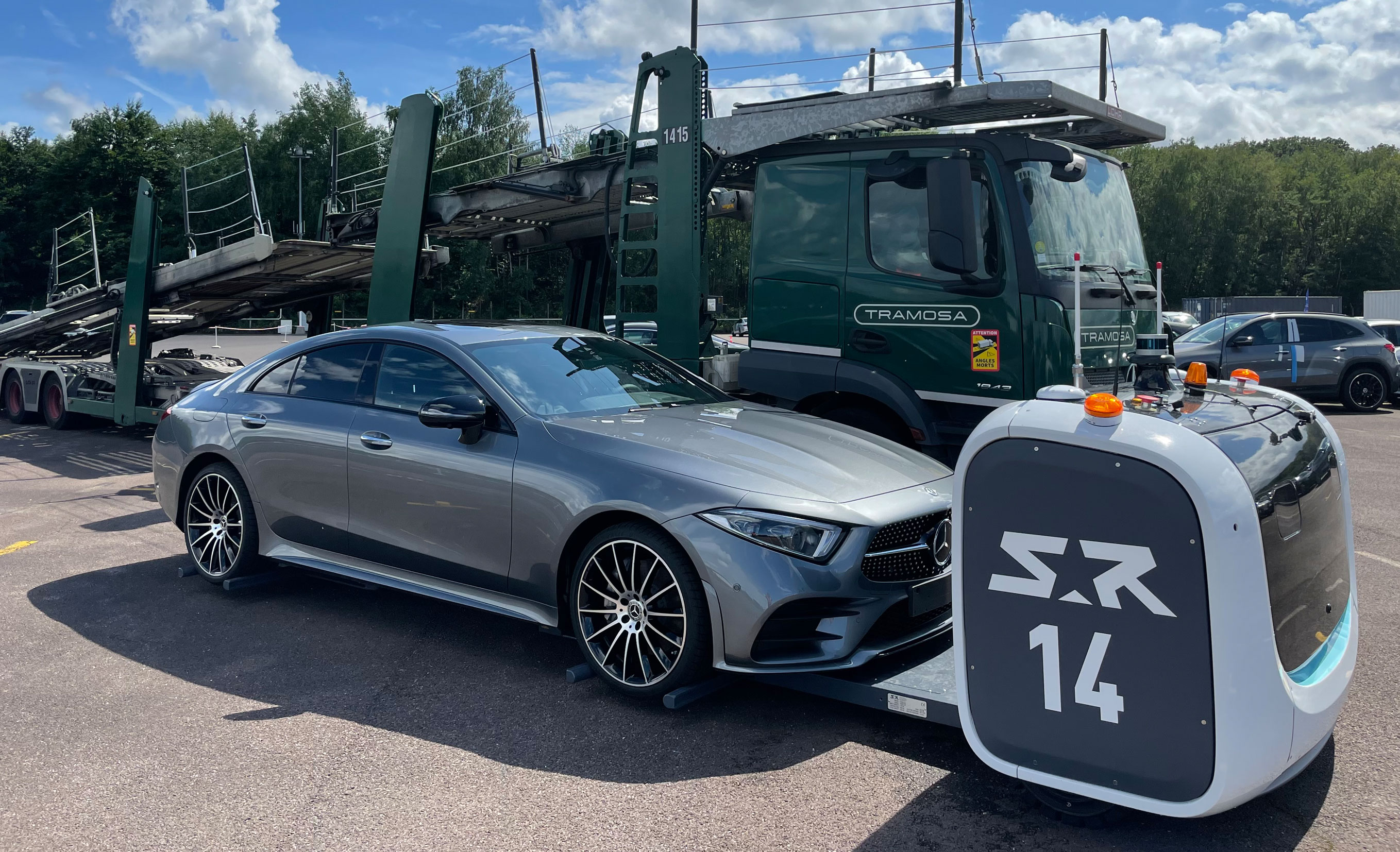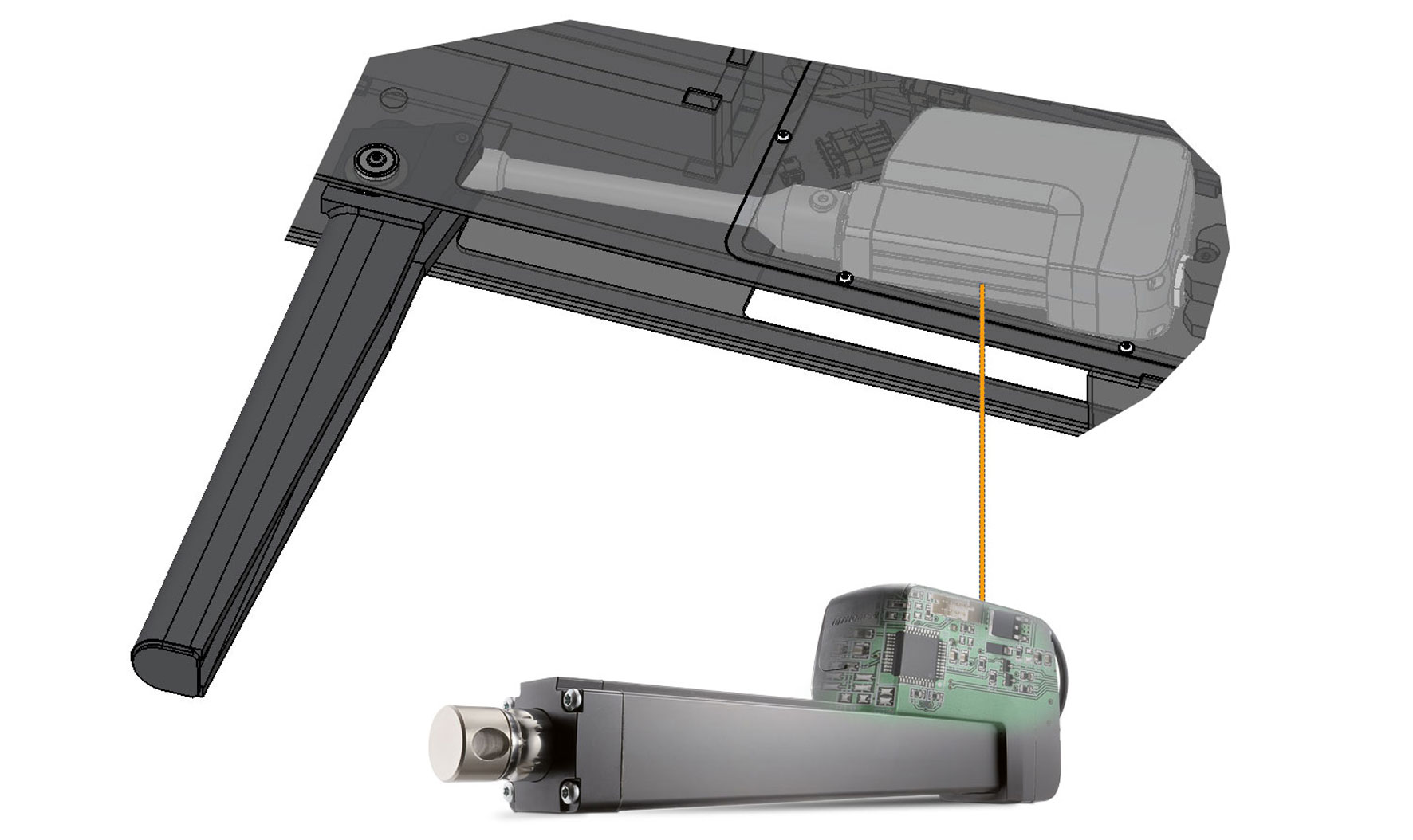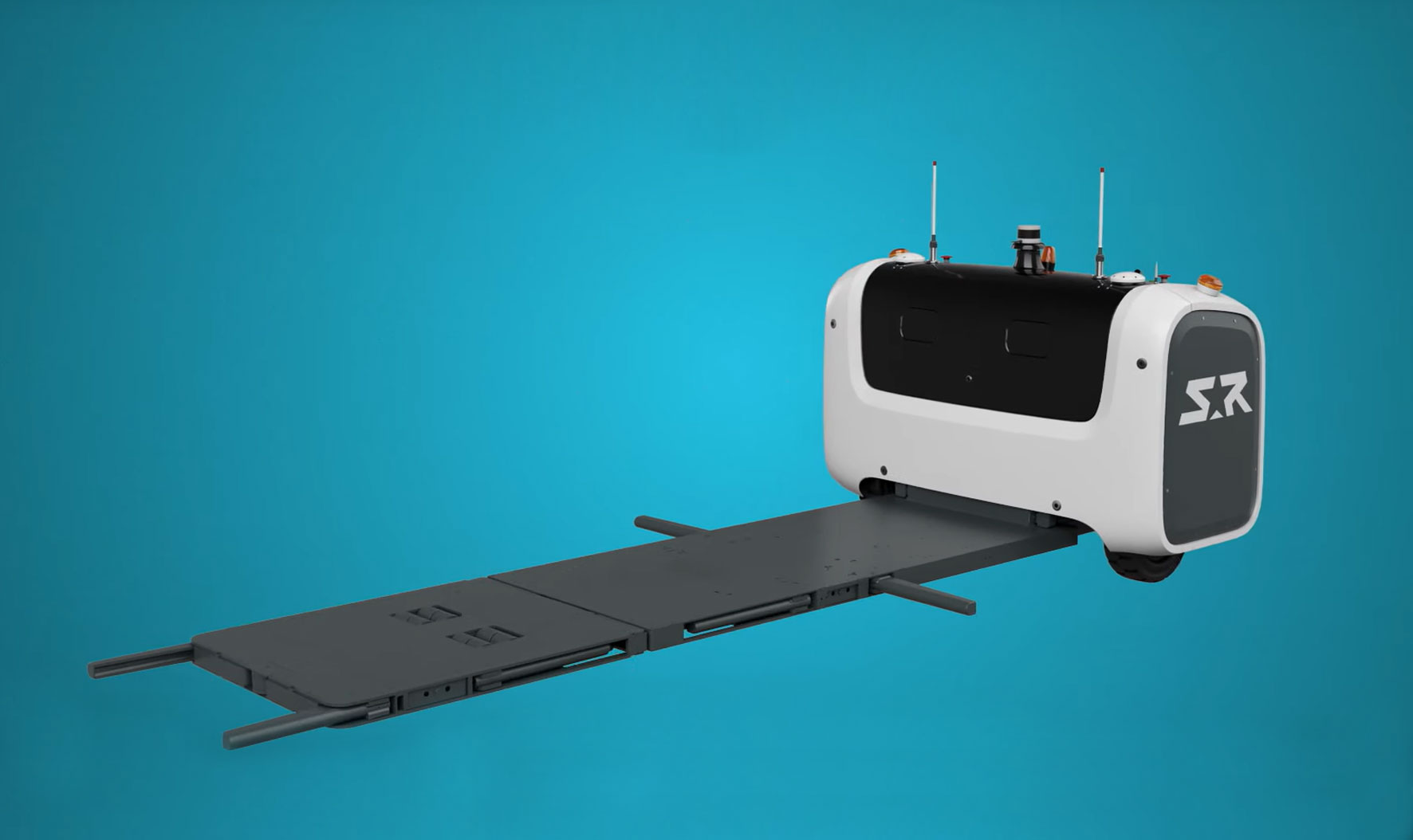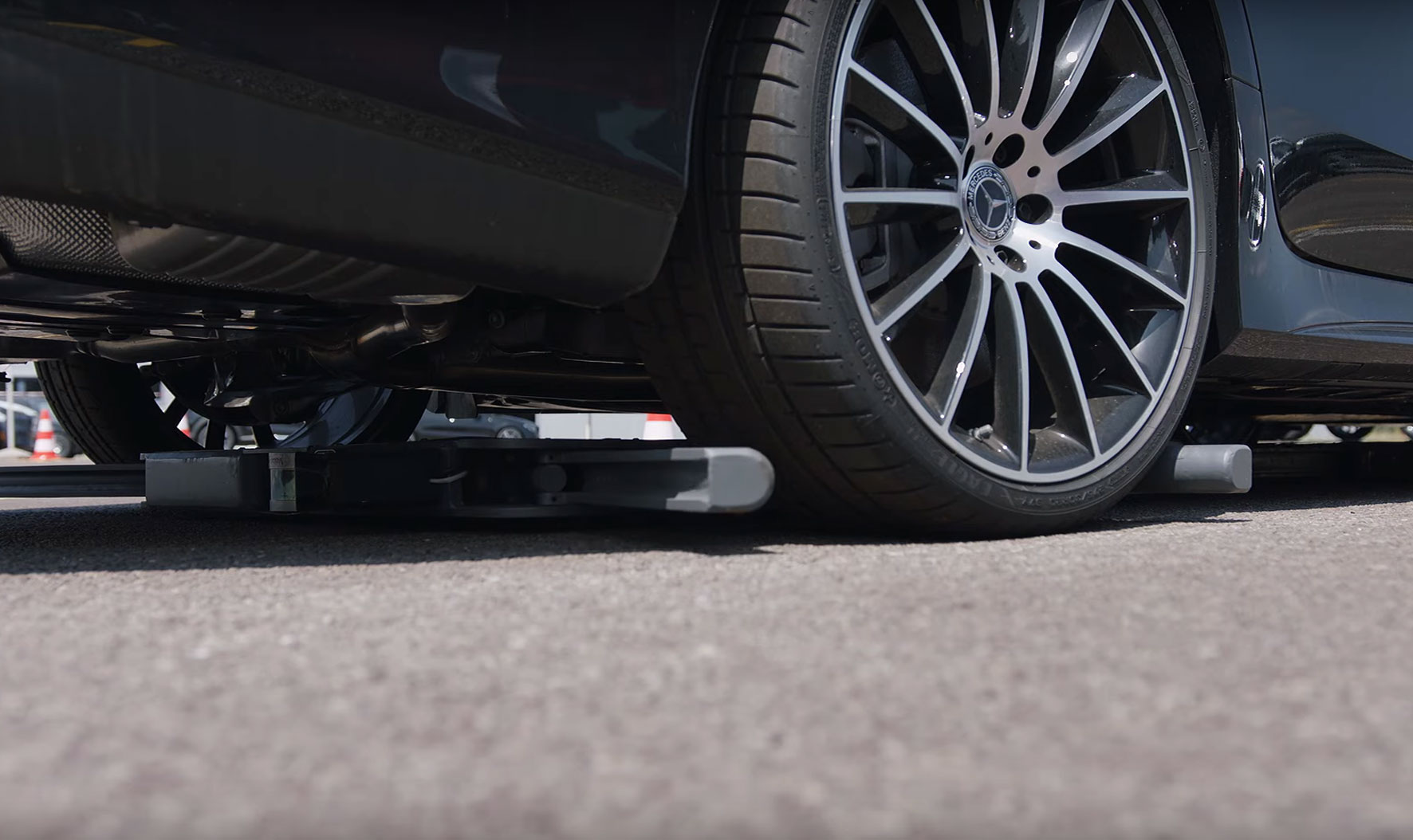Before a newly manufactured car is delivered to a dealership, it typically joins thousands of others in a large storage lot where it can sit for days or even months. Managing these lots requires many manual, time-intensive tasks: attendants must start each car, park it safely in a designated area, keep track of its location and be able to access it easily for distribution when needed. Vehicle remarketers, airports, auto rental services and many other businesses that require high-volume auto storage and easy retrieval share these same issues. Ultimately, manual auto parking results in inefficient space and labour utilization, risk of accident and injury to attendants, and burning of fuel.
France-based Stanley Robotics, a leading provider of automobile storage logistics robots, hopes to change all that, offering a self-guided, vehicle-carrying platform that finds a car, lifts it, moves it gently, and parks it in an allocated space. When the robot arrives at the car, light detection and ranging (LIDAR) sensors detect its position, the position of the wheels, and the distance between them, and slides the platform underneath. Once the car is aligned on the platform, electric linear actuators from Thomson Industries, Inc., help to secure the vehicle on the platform and lift it. (Figure 1)

Figure 1: Stanley Robotics robot head with car loaded on platform. Thomson actuators rotate plier arms to grip tires to wheels that keep cars from sliding off the platform while in motion.
Converting to electric
When Stanley Robotics created its first-generation robot in 2015, engineers used hydraulic cylinders to move the platform’s two arms, or pliers, into place. Hydraulics exhibited several drawbacks, however, leading them to explore electric actuators for their next-generation product.
“There were leaks with hydraulics; they were high maintenance. Their high load capacity was an advantage, but they are slower than electric actuators and needed additional components such as hoses and pumps. They are also much harder to integrate inside a robot than electric actuators. Hydraulic systems also consume more energy, which is important because we run on battery power and need to translate as much of that into motion as possible,” said Thomas Ravasi, Senior Mechanical Engineer at Stanley Robotics.
Stanley Robotics selected Thomson Electrak® HD electric linear actuators (Figure 2) based on extensive performance benchmarking against competitors, integration testing on 3D CAD design systems and numerous calculations. Based on this analysis, Stanley Robotics concluded that the Thomson electric actuators would meet their requirements for securing the car on the platform, lifting, intelligence, weather resistance and energy consumption.

Figure 2. Thomson Electrak HD smart linear actuators with onboard electronics and CAN bus option eliminate the need for standalone controls.
Securing the car while in motion
Before lifting the vehicle, it must be secured onto the platform. Stanley Robotics accomplishes this with pliers that close in under each tire. When the robot first slides the platform under the car, all pliers except the two closest to the robot head are retracted so that the platform can clear the width of the wheels. (Figure 3)

Figure 3. Except for the two fixed pliers shown, six pliers remain retracted until the Stanley parking management software signals six actuators to move them into place to grip the vehicle tires.
The two pliers closest to the front wheels never move and thus are not actuated. Once the robot senses that the front wheels are in contact with the fixed pliers, the actuators extend the two pliers in the adjustable rear part and move them backwards until they contact the front of the rear wheels. (Figure 4) Once it confirms the pliers are in contact with the fronts of all the tires, the robot signals the actuator to rotate the remaining four pliers to grip all the wheels. For this critical function, Stanley Robotics uses six Electrak HD actuators.

Figure 4: Thomson actuators are mounted to enable the pliers to pivot.
“When we lift the car, all its weight rests on the pliers, and the load puts pressure on the actuator within the platform, which tries to close the pliers inside the platform. The high static load capacity of electric actuators, however, enables them to operate like a brake to keep the load in the right position,” says Stanley Robotics Head of Robot Engineering Eric Cabrol.
“We use the capacity of the actuator to stop on its own,” says Cabrol. “The software asks the actuator to open the pliers as much as possible and as they contact the wheels, the actuator increases the grip until it reaches its maximum capacity and stops automatically. Our embedded software tracks all of this by monitoring current consumption and sensing the angle of the pliers. If the angle is open enough when the current exceeds a designated setpoint, the system assumes that the tire grasp is adequate.” Once the wheels are locked in place, two Electrak HD actuators raise the platform roughly 120 mm off the ground.
A smarter solution
Electrak HD actuators feature onboard electronics, which enable them to participate in programmed sequences and communicate information with other actuators and devices.
“We developed the software that we embed in the system. Integrating this with our sensor architecture enables us to compute the motions that need to be done and tells the actuators what to do. Our PC sends messages through Ethernet, then Ethernet signal CAN converters relay those messages to the actuators. The Thomson smart actuators provide all this capability plus exact feedback on their position along their stroke. With a hydraulic actuator, we would have to add that,” said Cabrol.
Battling the elements
Thomson Electrak HD actuators can operate in temperatures ranging from -40°C (-40°F) to +85°C (185°F). The high end of the temperature range is especially important because much of the robot’s activity is performed on blacktop, which absorbs heat. Cabrol said they have recorded temperatures up to 60°C (140°F).
“The Electrak HD’s IP rating is very attractive,” said Cabrol. “We have seen instances in which the robot platforms were completely submerged. Although, we would never run them while submerged, of course, we do want them to return fully operational when the water goes down.”
All charged up
Thomson actuators’ ball screw technology is very energy efficient. Operators can move more cars on a single charge with electric actuators rather than with hydraulics. “Because the electric actuators do not need to be running all the time, we lose less battery power that way,” said Cabrol. But at the same time, he says that some lots run the robots 24/7, and the battery efficiency helps there as well.
Speed and operational efficiency
Most high-volume parking lots impact their operators’ bottom line, so the faster the actuators can help park more cars in less space, the more valuable they are to the lot owners and managers. Electric actuators offer additional advantages in this regard because they enable multiple actuators to operate simultaneously, instead of in sequence, as most hydraulic solutions would.
“Our robots can improve space utilization in most storage parks by up to 50 percent,” said Cabrol. “We can park vehicles closer together because we don’t have to open the doors. We can simplify access lanes because our software knows exactly where each vehicle is and when it needs to get in and out. And we do it without having to start up the car, drive it and consume gas, which has implications for reducing the carbon footprints.”
Through their combination of static strength, intelligence, sturdiness and efficiency, Thomson Electrak HD electric linear actuators have proven their value to Stanley Robotics’ auto storage and retrieval systems and look to continue meeting their future needs.



